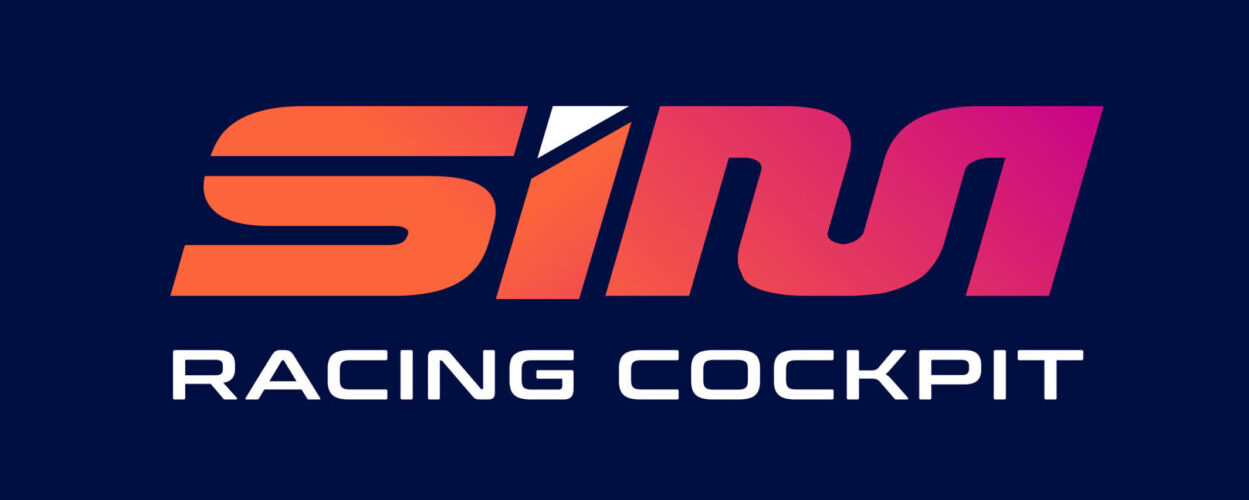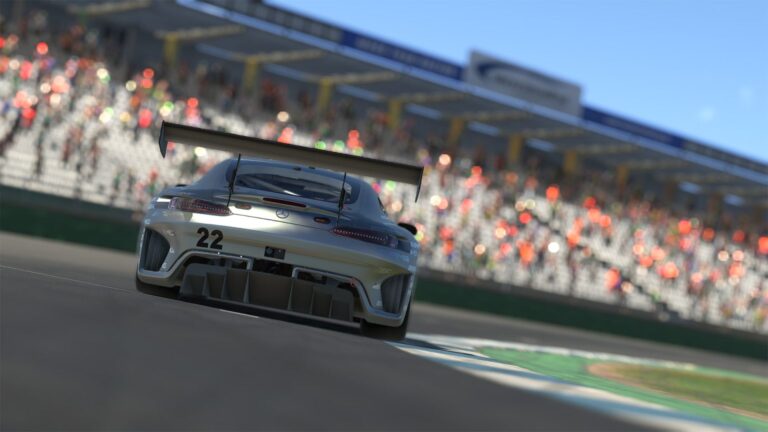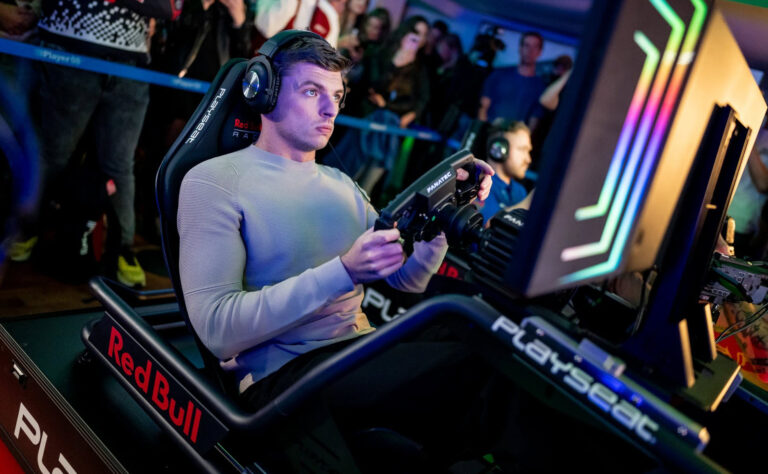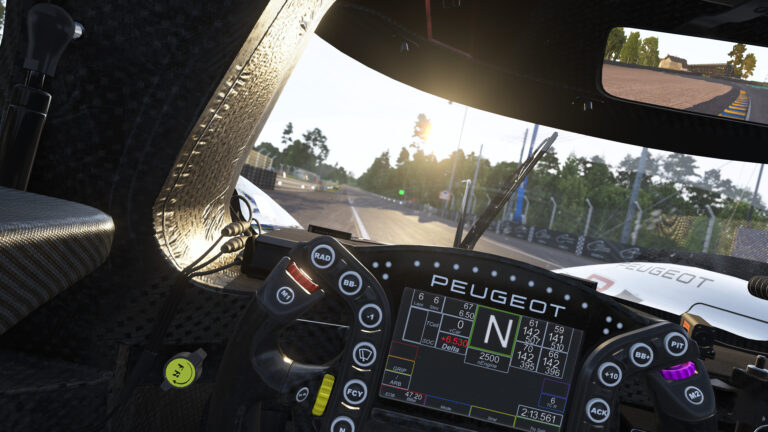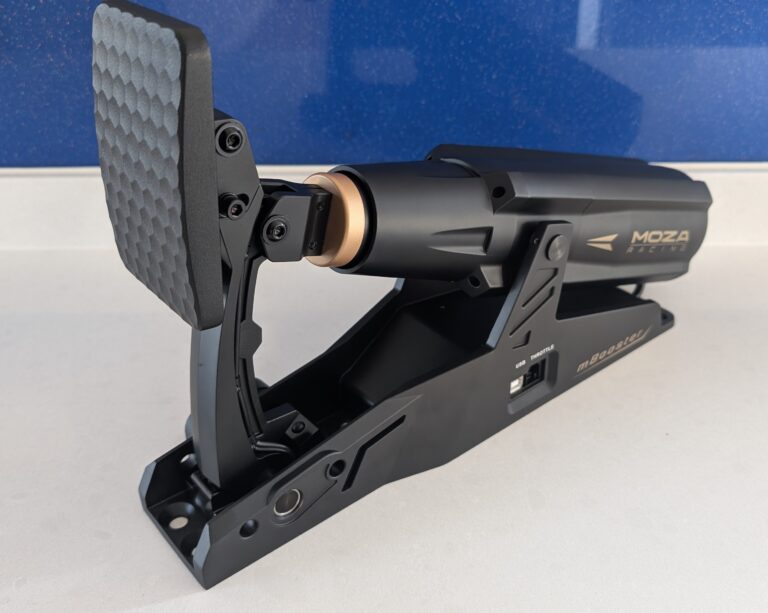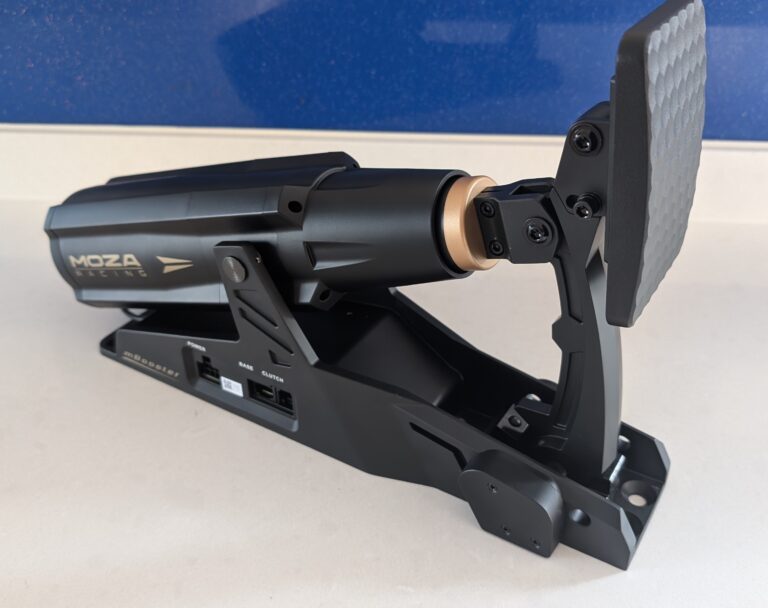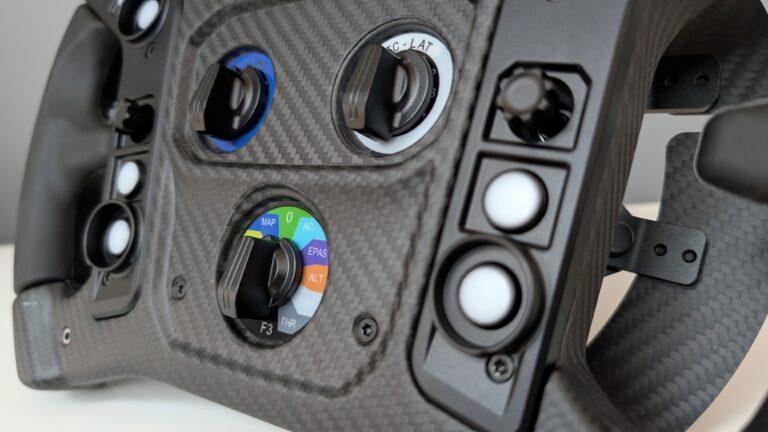Featured image: Toyota GR010 HYBRID
Le Mans Ultimate is a true simulation of the FIA World Endurance Championship, featuring all the classes, teams and cars of the 2023 championship with this year’s roster set for release at some point in 2024.
This also stretches to the championship’s hybrid ruleset, where cars in the top-level Hypercar class must manage a ‘virtual energy tank’ to make it to the end of a race.
In today’s post, we’re going to work through the virtual energy tank system below, explaining the Hypercar regulations and how they are simulated in LMU, delving into how to optimise regenerative braking and hybrid battery deployment during a race stint.
What are WEC’s Hypercar rules?
WEC’s Hypercar class is divided into LMDh and LMH cars. LMH (Le Mans Hypercar) cars are designed from the ground up by manufacturers and don’t require hybridisation.
Peugeot, Ferrari and Toyota all have LMH cars, with hybrid assistance providing four-wheel-drive through an electric motor across the front axle. Although four-wheel drive is a huge advantage on paper, hybrid LMH cars can only deploy it above 75 mph in dry weather and 91 mph in wet conditions. The exception to this rule is when the cars are in pitlane.

Prototypes from smaller outfits like Glickenhaus and Vanwall use petrol-engined rear-wheel-drive setups only. Small Italian car maker Isotta Fraschini has opted for the LMH route for 2024, while fellow minnows Glickenhaus and Vanwall are not on this season’s WEC grid (but do feature in LMU). Therefore, all 2024 Hypercars have hybrid assistance.
LMDh manufacturers, on the other hand, have to use a certain number of common components to help keep costs down; including the motor generator unit (MGU), battery and gearbox.

Chassis’ can be purchased from either Dallara, Multimatic, Ligier or Oreca, but the manufacturer is allowed free-reign over its aerodynamic package and electronics. It must also supply its own internal combustion engine (ICE).
Although LMDh cars have hybrid systems, they are located on the rear axle only, so are strictly rear-wheel-drive.
Both types of Hypercars have their performance monitored and adjusted by the FIA and ACO, but are mandated to produce a combined total of 500kW / 671 bhp from their hybrid unit and ICE (most manufacturers’ ICEs are capable of 600 bhp alone, with hybrid units achieving 250 bhp+, but the actual split in power is down to team preference as long as it does not exceed 671 bhp in total). All cars also have to achieve a minimum weight of 1030 kg.
The FIA and ACO dictate a Balance of Performance (BoP) calculation to the manufacturers to help ensure parity between all forms of Hypercar, adjusting power, weight and aerodynamic figures based on the relative performances of each car and detailed studies conducted by the governing bodies.
The BoP calculation is a secretive process and all WEC teams and drivers are forbidden from discussing it publicly for fear of bringing the championship into disrepute (teams love to complain about how unfair their BoP calculation is!).

What is the Virtual Energy Tank?
In simple terms, the Virtual Energy Tank (NRG) in LMU and the WEC is the amount of energy your car is mandated to use during a stint, based on a combination of fuel and electrical hybrid power (measured by a torque sensor attached to the MGU). LMU’s NRG bar is drained by deploying your car’s MGU battery and ICE under acceleration.
If your NRG hits 0% during a stint you will receive an instant stop-and-go penalty, so it’s crucial to avoid this scenario by ensuring your battery is used most efficiently. The NRG figure is determined by a real-world BoP calculation set by the FIA and ACO, so can’t be adjusted in-game. Each car’s NRG level can be different too, and can change from track to track.
NRG is only applicable to hybrid-assisted Hypercars and is used predominantly to reduce fuel use during a stint. Adding less fuel to your car is beneficial to tyre life and lap time, so balancing virtual energy requirements is very important.
How do Hypercars regenerate energy?
Hypercars store regenerated energy in their batteries. Regeneration occurs under braking, where the MGU converts heat captured during braking into electrical energy, which is then stored by the battery.
The regen level can be adjusted in LMU: the higher the regen level, the more braking power is produced (assisted by the MGU) and the more electrical energy is captured. This shortens braking distances and is crucial to setting quick lap times in the WEC and LMU.
How to manage NRG in Le Mans Ultimate
When accelerating with hybrid assistance, the charge in your car’s battery depletes, while braking regenerates some of that energy. However, with a full battery, no regeneration occurs and your braking performance is reduced as a result, potentially causing a spin. This is why it’s crucial to regularly deploy battery energy.
Conversely, not having any battery to deploy under acceleration means you will burn more ICE fuel, negatively affecting your overall NRG allowance. Balancing fuel usage and hybrid deployment during a race stint is key.

To maintain your battery’s charge you can adjust two settings in-car. The first is ‘motor map’ and the other is ‘regen level’. Increasing the motor map uses more battery under acceleration, while higher regen levels allow more battery regeneration under braking. This also enhances your car’s braking power, providing a form of ‘engine braking’ from the MGU.
Using more of the battery on acceleration reduces the need to use fuel from the ICE, which is why teams won’t brim their fuel tanks during pitstops. More fuel equals more weight and less pace.
As the NRG level is a combination of both fuel and electrical energy, adding lots of fuel is pointless, as rules dictate you can only use a certain amount of energy.
You can assign motor map and regen level to your wheel buttons or change them manually via the in-game MFD, but as they need to be changed frequently, map these functions to your wheel or a button box.
Managing NRG is complicated, but the key takeaway for beginners is to pit before your virtual energy level drops to 0%. The first time this happens you will incur a 100s stop-and-go penalty, with each further violation resulting in further 100s penalties (just like in WEC). The NRG level resets to 100% during a pitstop, however.

Le Mans Ultimate: hybrid driving guide
Below, we’ll run through a few driving tips to help you get the best out of LMU’s virtual energy tank.
As stated previously, to help shorten braking distances run with a high regen level. This is crucial in maintaining consistent braking performance across a stint. However, it will also recharge your car’s battery at the quickest rate, so counteract this by using a high motor map value (but not so much that the battery depletes too quickly).
If your battery reaches 100% charge you will lose the positive braking effects of regeneration, severely affecting your brake balance and potentially leading to a spin, so depleting the battery under acceleration is just as crucial as charging it. The key is to balance your regen level with the motor map, using lift and coast techniques and short-shifting to help save fuel too. Easy, right?!
One final tip is to ensure you don’t pit with a flat battery. Some Hypercars exclusively use MGU power exiting their pit box, so having zero battery means you can’t pull away from your box. Which would be quite embarrassing during a race…
The iRacing Career Guide: From Rookie to GT3
Console Sim Racing: The Complete Beginner’s Guide
Le Mans Ultimate: How to Drive the LMGT3 and Hypercar
mBooster Review: Moza’s New Active Pedal
Is Moza about to Completely Disrupt the Sim Racing Pedal game?
Mustang GT3 Sim Racing Wheel from VPG – Close Look
Topic: Le Mans Ultimate
